It's all about the classical music composers and their works from the last 400 years and much more about music. Hier erfahren Sie alles über die klassischen Komponisten und ihre Meisterwerke der letzten vierhundert Jahre und vieles mehr über Klassische Musik.
Friday, August 19, 2022
THE ROSE / SOMEWHERE IN TIME - Roger Williams
Mozart Piano Concerto No 9 E flat major K 271 Jeunehomme Maria / his music and his life
Wolfgang Amadeus Mozart (1756–1791)
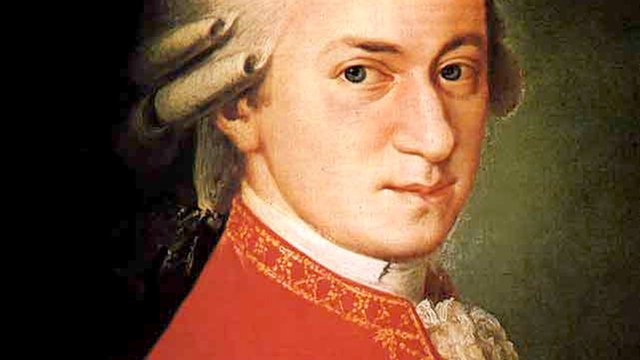
Biography
Mozart was born in Salzburg, in 1756. Mozart's father, Leopold, was an ambitious composer and violinist.
Though he was and still is considered a genius, he was also tactless, arrogant and had a scatological sense of humour.
Mozart composed his first opera, Apollo et Hyacinthus when he was only 11. A year later the Emperor Joseph II commissioned him to write La finta semplice.
In August 1782 he married Constanze Weber. The Mozarts' marriage seemed to be a happy one. Constanze was easy-going, free-spending and usually pregnant. Only two of their six children survived.
Post-marriage, some of Mozart's best started to appear -the Haffner and Linz symphonies and five string quartets, for example.
Between 1784 and 1786, he composed nine piano concertos and three of these concurrently with The Marriage of Figaro.
The year 1787 saw the premiere of Mozart's second opera, Don Giovanni.
Mozart had a great run of successes in his final years - Eine Kleine Nachtmusik and the Clarinet Quintet in A, three of his 41 symphonies; Cosí fan Tutte, three piano trios, the Coronation piano concerto, two piano sonatas and three string quartets.
His health began to fail and his work rate slowed in 1790. He got better, though, and in 1791 alone composed the most famous The Magic Flute, the Requiem (unfinished), and the Clarinet Concerto.
Mozart did not live long enough to complete his Requiem. He died in Vienna, in 1791, before his 36th birthday.
Thursday, August 18, 2022
Dmitri Shostakovich - his music and his life
Wednesday, August 17, 2022
Braveheart Theme (For the love of a Princess)
Braveheart Theme (For the love of a Princess)
TITANIC- Joslin - My Heart Will Go On (Cover)
TITANIC- Joslin - My Heart Will Go On (Cover)
Davao City composer explains what is popular Kadayawan song ‘Bahaghari Tayo’ all about
by Keith Bacongco, Manila Bulletin
DAVAO CITY – For almost 20 years, the iconic song “Bahaghari Tayo” composed by local music legend Popong Landero is always associated with the annual Kadayawan Festival every August.
Aside from Davaoeños, this festive song is also familiar among those who are frequent visitors of this city not just during the Kadayawan Festival but also the Araw ng Davao celebration.
The song is usually played in public places during festivities.
But what is really the inspiration behind the making of this festive song?
Unknown to many, Bahaghari Tayo does not simply depict festivity but it is more about the recovery from fear, pain, and suffering from terrorist attacks in this city, Landero admitted to the Manila Bulletin.
“When I heard that a bomb exploded at the airport, I was very worried because my wife was working there. Although she was safe because they were inside,” he recalled, referring to the bomb attack on March 4, 2003 that killed 21 people and injured hundreds here.
The incident, the musician added, reminded him of a grenade blast during college days at the University of Mindanao in the 1980s that injured several people. “The explosion was quite close to the spot where we were playing guitar. We saw some people injured and the debris even hit our heads. We were shocked and a lot of people panicked.”
Based on this experience, Landero added, he tried making a song but it never materialized. “So I just tried to forget that experience.”
And the 2003 twin bombings happened.
Aside from the airport bombing, another bomb went off ear the gate of the Sasa International Seaport on April 2 that killed 16 persons and injured 45 others.
These incidents fueled him once again to write the song, Landero recalled. But he also wanted to the song to be his entry to the Huni sa Dabaw, a songwriting contest, which was a part of the Araw ng Dabaw celebrations in 2004.
Released in 2004, the song is part of a locally-produced album with the same title that contains nine other tracks that talk about love, abundance in harvest, peace, and harmony.
While the song is based on the pain and suffering, Landero further disclosed that he wanted to write the song the opposite way.
“I thought of writing the song that would not touch on fear and loneliness. So that explains the lyrics that talks about recovery from sufferings, sustained development amid the adversities, as well as to urge the Davaoeños tounite for peace,” the seasoned musician explained.
In 2008, Landero added, the city council adopted the song as the official theme song of the Araw ng Dabaw celebrations.
The song’s festive melody has inspired various local artists and school-based drum and bugle corps to play it with their own renditions during their performances in different events.
The entire album is now available on Spotify.
Tuesday, August 16, 2022
Yuja Wang: Schumann Piano Concerto in A minor Op. 54 [HD]
Monday, August 15, 2022
Love Theme from Romeo and Juliet - Joslin - Henri Mancini, Nino Rota
Love Theme from Romeo and Juliet - Joslin - Henri Mancini, Nino Rota
Manila Symphony Orchestra | Medley of Philippine Folk Songs by Bernard G...
Yuja Wang: Mendelssohn Piano Concerto No. 1 in G minor, Op. 25 [HD]
Friday, August 12, 2022
Reading Franz Liszt: The Poetry Behind the Piano Music
by Frances Wilson, Interlude
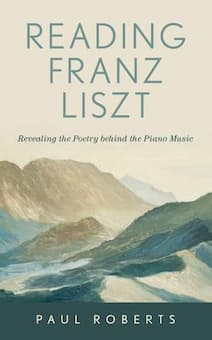 In the introduction to his new book, pianist Paul Roberts recounts a conversation with “an elderly and much celebrated piano teacher” when he was just starting out as the inspiration for a lifetime’s fascination with literature and language and the essential connections between literature and music: “I introduced myself. I cannot remember quite how the topic came about, but within a few minutes we were talking about Liszt’s great triptych of piano pieces known as the Petrarch Sonnets, inspired by the love poetry of the 14th-century Italian poet Francesco Petrarca. “Oh!” I enthused, “those poems …!” She entered her studio. “We don’t need them,” she said, and closed the door. I was deflated. And dumbfounded.”
In the introduction to his new book, pianist Paul Roberts recounts a conversation with “an elderly and much celebrated piano teacher” when he was just starting out as the inspiration for a lifetime’s fascination with literature and language and the essential connections between literature and music: “I introduced myself. I cannot remember quite how the topic came about, but within a few minutes we were talking about Liszt’s great triptych of piano pieces known as the Petrarch Sonnets, inspired by the love poetry of the 14th-century Italian poet Francesco Petrarca. “Oh!” I enthused, “those poems …!” She entered her studio. “We don’t need them,” she said, and closed the door. I was deflated. And dumbfounded.”
Paul Roberts feels that music comes from sources beyond simply itself – from, for example, the composer’s life experience, the influence of others, and, in the case of Liszt, poetry and literature, and that as pianists we do the music, and its composer, a disservice by not paying attention to these external sources of inspiration. In his engaging, eloquent and highly readable text, Roberts explores what he believes to be an inseparable bond between poetry and the piano music of Franz Liszt, and how literary inquiry affects musical interpretation and performance. For Roberts, an appreciation of the poetry which inspired or informed Liszt’s music gives the pianist, and listener, significant insights into the composer’s creative imagination, bringing one closer to his music and allowing a deeper understanding, and, for the performer, a richer, more multi-dimensional interpretation of the music. It also offers a better appreciation of Liszt the man: too often dismissed as a superficial showman, in this book Roberts reveals Liszt as a man of passionate intellectual and emotional curiosity, who read widely and with immense discernment, all of which is reflected in his music. As Alfred Brendel said, “Liszt’s music….projects the man”.
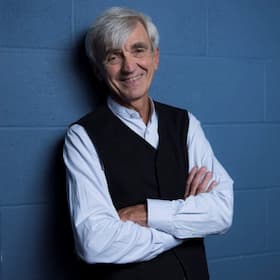
Paul Roberts © Viktor Erik Emanuel
Poetry and literature were meat and drink to Franz Liszt, who performed in and attended the cultural salons of 1830s Paris where he knew writers such as Victor Hugo and George Sand. He was familiar with the writing of Byron, Sénancour, Goethe, Dante, Petrarch and others, and his scores are littered with literary quotations which offer fascinating glimpses into the breadth of his creative imagination and what that literature meant to him. For the pianist, they provide an opportunity to “live inside his mind” and open “our imaginations to the wonder of his music”.
Perhaps the most obvious connection between Liszt and poetry is his Tre Sonetti del Petrarca – the three Petrarch Sonnets. They began life as songs which Liszt later arranged for piano solo, and included them in the Italian volume of his Années de pèlerinage. Liszt and his lover Marie d’Agoult spent two years in Italy and it was here that Liszt was exposed to the marvels of Italian Renaissance art and architecture and the poetry of Dante and Petrarch.
The poetry of Petrarch was central to Liszt’s creative imagination and in his triptych inspired by the Italian poet’s sonnets, we find an extraordinary depth of expression and emotional breadth. In the chapter ‘The Music of Desire’, Roberts explores Petrarch’s sonnets in detail and demonstrates how Liszt translates the passion of the poet into some of the finest writing for piano by Liszt, or indeed anyone else.
Perhaps because I have studied and performed these pieces myself, a study which included close reference to Petrarch’s poetry, it is here that I find Roberts’ argument most persuasive, that the pianist really needs this literary context and understanding to bring the music fully to life. He shows how Liszt responds to the ebb and flow of emotions in Petrarch’s writing, in particular in the most passionately dramatic of the three sonnets, No. 104, “Pace no trovo” (I find no peace), where the poet veers almost schizophrenically between extremes of emotion, from the depths of despair to ecstasy.
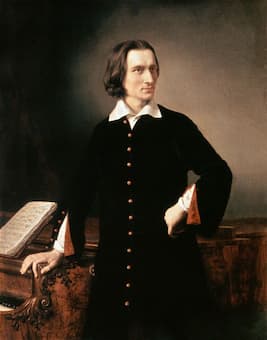
Franz Liszt
Subsequent chapters explore other great piano works – the extraordinary B-minor Sonata which Roberts believes is firmly connected to that pinnacle of nineteenth century European literature, Goethe’s Faust, the existentialism of Vallée d’Obermann, a work which exemplifies the Romantic spirit, and its relationship with Etienne de Sénancour’s cult novel Obermann, the “aura” of Byron and his Childe Harold’s Pilgrimage which pervade the Swiss volume of the Années alongside Liszt’s personal experience of the majestic landscape of Switzerland and the Alps. The final chapter explores the Dante Sonata and Liszt’s reverence for The Divine Comedy at a time when Dante’s poetry was being rediscovered by English and European Romantic writers like Keats, Coleridge, Shelley and Stendhal. Throughout, Roberts conveys the power of literature to awaken and inspire the Romantic imagination and sensibilities, and demonstrates how this might inform the way one performs Liszt’s music – from the physical cadence of poetry to its drama, narrative arc and emotional impact which had such a profound effect on Liszt and which infuses his music in almost every note. Here Liszt finds a new kind of expression in which, in his own words, music becomes “a poetic language, one that, better than poetry itself perhaps, more readily expresses everything in us that transcends the commonplace, everything that eludes analysis”.
A useful Appendix explores the influence of other poets such as Alphonse de Lamartine and Lenau, with analysis of other pianos works, including Bénédiction de Dieu dans la solitude, the Mephisto Waltz, the two St Francis legends, and Mazeppa, inspired by a poem by Victor Hugo.
In this book, Paul Roberts reveals the essence of Liszt literary world, providing the pianist with valuable insight and inspiration with which to appreciate, shape and perform his music.
Reading Franz Liszt: Revealing the Poetry behind the Piano Music is published by Amadeus Press, an imprint of Rowman & Littlefield, USA.
Musicians Divulge a Secret: The Pieces They Would Rather Not Play Ever Again!
by Janet Horvath, Interlude

Put Ravel’s Daphnis and Chloe or La Valse, Stravinsky’s Rite of Spring, or Rachmaninoff’s Symphonic Dances—or pretty much anything by Prokofiev or Mahler—in front of me and I’ll play them happily over and over, and I have. But dear readers I must confess there are pieces of music I hope I never have to play again, and I’m not alone. Some works we professionals play to death; others just get under our skin. Let me explain.
Perhaps you love the Pachelbel Canon. It’s a popular piece for weddings. While the violins soar through multiple variations the poor cellist plays the same 8 notes s-l-o-w-l-y, repeating the pattern D-A-B-F#-G-D-G-A. Each iteration takes 4 measures and is played 28 times! And some perform it extra deliberately. It’s a bit like detention for cellists! Funny enough, once a local National Public Radio classical music radio station played this continuously until they’d met their pledge drive donation goals. I imagine some listeners silently (or loudly) screamed, “Make it stop…”
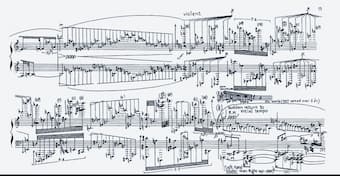
Crazy instructions!
Ravel’s Bolero is another very popular piece of music but not for the snare drum player. He or she has to play the two-bar 24-note pattern unrelentingly steady in rhythm starting very softly or pianissimo and increasing in volume to a dramatic fortissimo. The piece is 430 bars; about 15 minutes. Need I do the math? That’s 5,144 snare drum strokes. Talk about repetition… And since we’re counting, did you know Tchaikovsky was fond of the cymbals? During Swan Lake, there are a total of 1,214 cymbal crashes in each performance. One of my colleagues sat very close to the percussion section. The din after 21 performances and 29,715 cymbal crashes, left her shell-shocked.
 Other pieces can be tiresome because of the ubiquitous numbers of performances of them. One colleague told me, “I had a nightmare that I was playing Messiah, and I woke up and it was true!” Ditto Tchaikovsky Nutcracker. I remember during the Holidays the Minnesota Orchestra would be divided in two. Half played 10 Messiah performances and the other half performed The Nutcracker Ballet 13 times in two weeks—twice on weekend days—every season for years. May I remind you of the temperatures in December in Minnesota that dip well below zero? The nearest parking was several blocks away. I’d drag my cello in the bitter cold to the huge auditorium hoping to thaw in time for the performances.
Other pieces can be tiresome because of the ubiquitous numbers of performances of them. One colleague told me, “I had a nightmare that I was playing Messiah, and I woke up and it was true!” Ditto Tchaikovsky Nutcracker. I remember during the Holidays the Minnesota Orchestra would be divided in two. Half played 10 Messiah performances and the other half performed The Nutcracker Ballet 13 times in two weeks—twice on weekend days—every season for years. May I remind you of the temperatures in December in Minnesota that dip well below zero? The nearest parking was several blocks away. I’d drag my cello in the bitter cold to the huge auditorium hoping to thaw in time for the performances.
 There are many works that are ever-present in our repertoire. Sometimes the consequences of often-played repertoire are that they are given short shrift in rehearsal. No musician enjoys walking on eggshells during a concert or conversely slamming through a work such as Liszt Les Preludes, Orff’s Carmina Burana, Tchaikovsky’s Romeo and Juliet or the Symphonies No. 4 or No. 5, or even Handel’s Water Music. There are always tricky passages and difficult transitions that should be rehearsed for ensemble.
There are many works that are ever-present in our repertoire. Sometimes the consequences of often-played repertoire are that they are given short shrift in rehearsal. No musician enjoys walking on eggshells during a concert or conversely slamming through a work such as Liszt Les Preludes, Orff’s Carmina Burana, Tchaikovsky’s Romeo and Juliet or the Symphonies No. 4 or No. 5, or even Handel’s Water Music. There are always tricky passages and difficult transitions that should be rehearsed for ensemble.
Perhaps a particular piece brings back bad memories. Did your mom force you to play Für Elise by Beethoven or Haydn Trumpet Concerto for Aunt Betsy, and Grandma Rose and every person who was invited over for dinner when you were growing up no matter how you protested? My parents were guilty.
Please don’t blame the poor second violins and violas (and sometimes the horns) when they almost drop their instruments in boredom. While you’re elegantly waltzing, they have to play endless off beats in Strauss waltzes or Sousa Marches, and they rarely get to play the melody.

Unplayable!
We really have no patience for a composer who doesn’t know our instrument and writes nothing but rests. We relish performing pieces that are challenging unless the composer’s metronome markings suggest an unplayable tempo, contradictory (or silly) instructions, or if he or she uses an undecipherable meter, like something you’ve seen in a calculus textbook watch out. That’s when we might throw up our hands!
Even soloists must bemoan the fact that certain concertos, favorites and crowd-pleasers, are requested in every city despite the fact that an artist hopes to perform more unfamiliar works worth playing and hearing. But that said, we never tire of the great masterworks: Brahms, Sibelius, Barber, and Mendelssohn Violin Concertos, Brahms, Schumann, Grieg, Rachmaninoff, Prokofiev, and Tchaikovsky Piano Concertos and Beethoven of course.
Pianist Jon Kimura Parker tells us that he first played the Beethoven Third Piano Concerto in C minor, when he was twelve years old. It was his concerto debut in Vancouver, with the Vancouver Symphony and the first concerto he ever learned. This week, the 50th anniversary of performing the work, he still finds new revelations, after playing it countless times. Beethoven’s vehement music continues to speak to us. Surely music wouldn’t be where it is today without him. Listen to this rendition of the last movement of Beethoven’s First Piano Concerto during Covid. “One can only imagine what Beethoven would think of all of this,” says Parker. “That his music is being performed so much even now, when our logistic preparations have required extra imagination, would surely boggle his mind!”
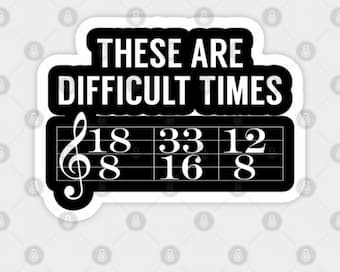 Rather than predictable as some music is, this music never ceases to amaze performers and listeners alike. But even the masterworks of our repertoire benefit from a fresh approach by the artist and/or new ideas from the conductor.
Rather than predictable as some music is, this music never ceases to amaze performers and listeners alike. But even the masterworks of our repertoire benefit from a fresh approach by the artist and/or new ideas from the conductor.
My suggestion for programing a recital, a small ensemble concert, or a full orchestra season: it would be wise for small ensemble artistic directors, orchestra managements, and conductors to consider not only “good box office” but also what will challenge, inspire, and stimulate the musicians. That’s no secret!

